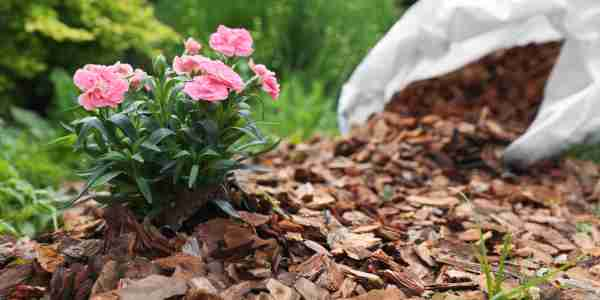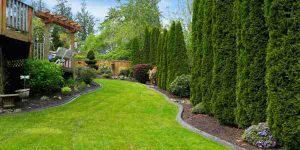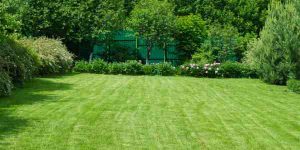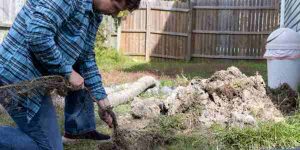Choosing the Right Mulch

Choosing the Right Mulch: Types, Benefits, and Applications
Mulching is one of the most effective practices you can implement in your garden to enhance its health and aesthetic appeal. At Impact Landscapes, we believe that choosing the right mulch can make a significant difference in the vitality of your plants and the overall look of your garden. This blog will guide you through the different types of organic mulch, their benefits, and how to apply them correctly to get the most out of your landscaping efforts.
Types of Organic Mulch
Organic mulches are derived from natural materials and decompose over time, adding nutrients to the soil. Here are some common types of organic mulch:
1. Wood Chips and Bark
- Description: Made from the bark and wood of trees, these mulches are available in a variety of sizes and colors.
- Benefits: They decompose slowly, providing long-term soil benefits, and are excellent for decorative purposes.
- Applications: Ideal for flower beds, around trees, and in shrub borders.
2. Straw
- Description: Straw mulch is made from the stalks of grain plants, such as wheat.
- Benefits: It’s lightweight, easy to spread, and effective at retaining soil moisture and preventing weed growth.
- Applications: Perfect for vegetable gardens and newly seeded lawns.
3. Compost
- Description: Compost is decomposed organic matter rich in nutrients.
- Benefits: It improves soil structure, fertility, and moisture retention.
- Applications: Best used in vegetable gardens, flower beds, and as a top-dressing for lawns.
4. Leaves
- Description: Shredded or whole leaves collected from deciduous trees.
- Benefits: They are free if you collect them yourself, break down relatively quickly, and enrich the soil with organic matter.
- Applications: Suitable for garden beds and around trees and shrubs.
5. Grass Clippings
- Description: Fresh or dried clippings from your lawn.
- Benefits: They decompose quickly and provide a good source of nitrogen.
- Applications: Ideal for vegetable gardens and around young plants but should be applied in thin layers to avoid matting.
6. Pine Needles
- Description: Pine needles, also known as pine straw, are a lightweight and natural mulch option.
- Benefits: They decompose slowly, are easy to spread, and provide excellent soil acidity balance.
- Applications: Suitable for acid-loving plants like azaleas, rhododendrons, and blueberries.
Rubber Mulch
While rubber mulch is not organic, it’s worth mentioning due to its unique benefits and applications in landscaping.
1. Rubber Mulch
- Description: Made from recycled rubber, often from tires.
- Benefits: It’s durable, does not decompose, and provides good weed control. Rubber mulch is also excellent for playgrounds and high-traffic areas as it cushions falls and reduces soil compaction.
- Applications: Ideal for playgrounds, pathways, and around trees and shrubs where durability and low maintenance are priorities.
Benefits of Mulching
Mulching offers numerous benefits beyond just improving the appearance of your garden:
- Moisture Retention
Mulch helps retain soil moisture by reducing evaporation, which is particularly beneficial during hot, dry periods. This means less frequent watering is needed, saving both time and water.
- Weed Suppression
A thick layer of mulch inhibits the growth of weeds by blocking sunlight. This reduces the need for manual weeding or chemical weed killers.
- Soil Temperature Regulation
Mulch acts as an insulating layer, keeping the soil cooler in the summer and warmer in the winter. This helps protect plant roots from extreme temperature fluctuations.
- Soil Health Improvement
As organic mulches decompose, they add essential nutrients to the soil, improving its structure and fertility. This supports healthy plant growth.
- Erosion Control
Mulch helps prevent soil erosion by reducing the impact of raindrops on the soil surface and slowing down runoff.
- Aesthetic Enhancement
Mulch adds a finished look to your garden, highlighting plants and creating a neat, cohesive appearance.
How to Apply Mulch
Applying mulch correctly is crucial to maximizing its benefits. Follow these steps for the best results:
- Prepare the Area
Clear the area of weeds and debris before applying mulch. For new plantings, water the soil thoroughly.
- Choose the Right Thickness
Apply a 2-4 inch layer of mulch. Too little may not effectively suppress weeds, and too much can suffocate plant roots.
- Keep Away from Plant Stems
Avoid piling mulch directly against plant stems or tree trunks. Leave a small gap around the base to prevent rot and pest infestations.
- Refresh as Needed
Organic mulch needs to be replenished periodically as it decomposes. Check your mulch layer annually and add more as necessary to maintain the desired depth.
Final Thoughts
Choosing the right mulch for your garden involves considering both the type of plants you have and the specific conditions of your garden. Whether you opt for organic mulch to improve soil health or rubber mulch for its durability and aesthetic appeal, the benefits are clear. Mulching not only enhances the appearance of your landscape but also promotes healthier, more resilient plants.
At Impact Landscapes, we offer expert advice and services to help you select and apply the best mulch for your garden. Contact us today to learn more about how we can help you achieve a beautiful and thriving landscape.



